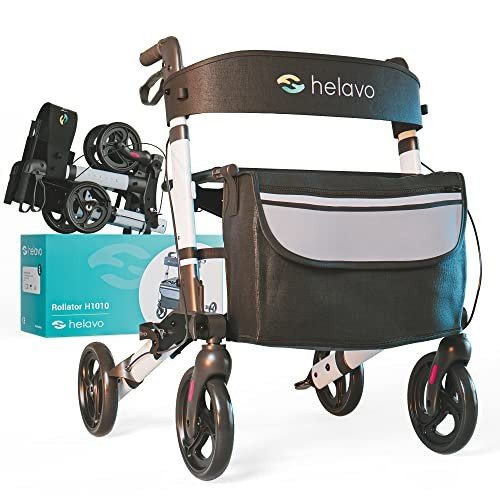Understanding Mobility Aids: Enhancing Independence and Quality of Life
Mobility aids are essential tools that help people with physical disabilities or conditions that hinder their capability to move freely. These aids not only promote self-reliance and boost lifestyle however likewise supply safety and support for users in numerous environments. The landscape of mobility aids is broad, incorporating a variety of devices tailored to fulfill individual requirements. This post aims to explore the various types of My Mobility Scooters aids, their benefits, factors to consider for use, and frequently asked concerns.
Kinds Of Mobility Aids
Mobility aids can be categorized into several major types, each developed to assist in specific ways. Below is a table summarizing the most typical mobility aids:

| Type of Mobility Aid | Description | Perfect Use Case |
|---|---|---|
| Wheelchairs | A chair installed on wheels used by those not able to stroll. | Long-lasting disability or extreme mobility problems. |
| Walkers | A frame that offers assistance for individuals while walking. | Post-surgery healing or balance issues. |
| Walking sticks | A stick used for balance and support while walking. | Mild mobility issues or as a preventive measure. |
| Rollators | A Days Lightweight Folding Walker with Seat - Mobility Made Easy geared up with wheels and typically a seat. | Individuals requiring support over longer ranges. |
| Crutches | Gadget utilized to elevate and support the body weight of an individual with a leg injury. | Temporary injuries needing non-weight bearing. |
| Scooters | A motorized gadget for those who can sit however not stroll fars away. | Long getaways and fatigue-prone people. |
| Raise Chairs | Recliner chairs that raise to help users in standing. | Elderly people or those with extreme discomfort. |
Benefits of Mobility Aids
Using mobility aids extends beyond mere transportation; they serve several important functions in improving the wellness of users:
- Independence: Mobility aids empower users to perform day-to-day activities without relying greatly on caretakers or help from others.
- Safety: Many mobility aids are developed to decrease the threat of falls, offering users with stability when moving.
- Boosted Quality of Life: By enhancing mobility, people can participate in social activities, workout, and preserve neighborhood connections, positively affecting their mental health.
- Access to Environments: Mobility aids can facilitate access to locations that may otherwise be challenging to navigate, such as public transport and public spaces.
- Support Recovery: They play an essential function in rehabilitation following surgery or injury by promoting gradual mobility and helping recovery.
Considerations for Choosing the Right Mobility Aid
Choosing the suitable mobility aid can significantly affect an individual's quality of life. Here are a number of essential considerations to keep in mind:
- Level of Mobility Impairment: Assess the severity of mobility issues to identify the most ideal kind of aid.
- User's Physical Condition: Consider aspects like weight, strength, and general health.
- User's Lifestyle and Environment: Analyze where the mobility aid will be utilized most often: indoors, outdoors, or both.
- Functional Needs: Evaluate if additional features such as storage, seating, or height adjustments are needed.
- Consultation with Professionals: Always consult from healthcare experts for assistance tailored to specific circumstances.
Often Asked Questions (FAQs)
Q1: What is the difference in between a walker and a Pepe 4-Wheel Rollator Walker with Seat?A1: A walker is an easy frameutilized for support and balance, while a Rollator For Hiking has wheels, supplying much easier mobility and typically features extra features such as a seat and storage. Q2: Can mobility aids be covered by insurance?A2:
Many medical insurance plans, including Medicare, might cover mobility aids if they are deemed clinically required. It is suggested to speak with your insurance coverage supplier for specific details. Q3: How do I understand when it's time to use a mobility aid?A3: If you've experienced frequent falls, relentless discomfort
while walking, or have trouble finishing day-to-day activities
, it might be time to think about a mobility aid. Consult a health care professional for customized suggestions. Q4: Are there mobility aids developed for outdoor use?A4: Yes, numerous mobility aids are specifically developed for Outdoor Walker environments, consisting of scooters, outdoor walkers, and all-terrain wheelchairs, equipped to manage numerous terrains. Q5: Can I use a mobility aid after surgery, like knee replacement?A5: Yes, mobility aids such as walkers and crutches are frequently advised post-surgery to aid recovery and keep safety as you restore
strength. Mobility aids play an important role in supporting people with mobilitychallenges, helping with independence, and boosting total quality of life. With a varied variety of alternatives available, it's vital for users to examine their distinct needs and seek advice from experts to select the most suitable aid. As innovation and design continue to progress, these aids will unquestionably become a lot more easy to use and reliable, promoting a more inclusive world for everyone. By comprehending the various types of mobility aids and their particular benefits, individuals can make informed choices that boost their mobility and facilitate a more active and fulfilling lifestyle.






